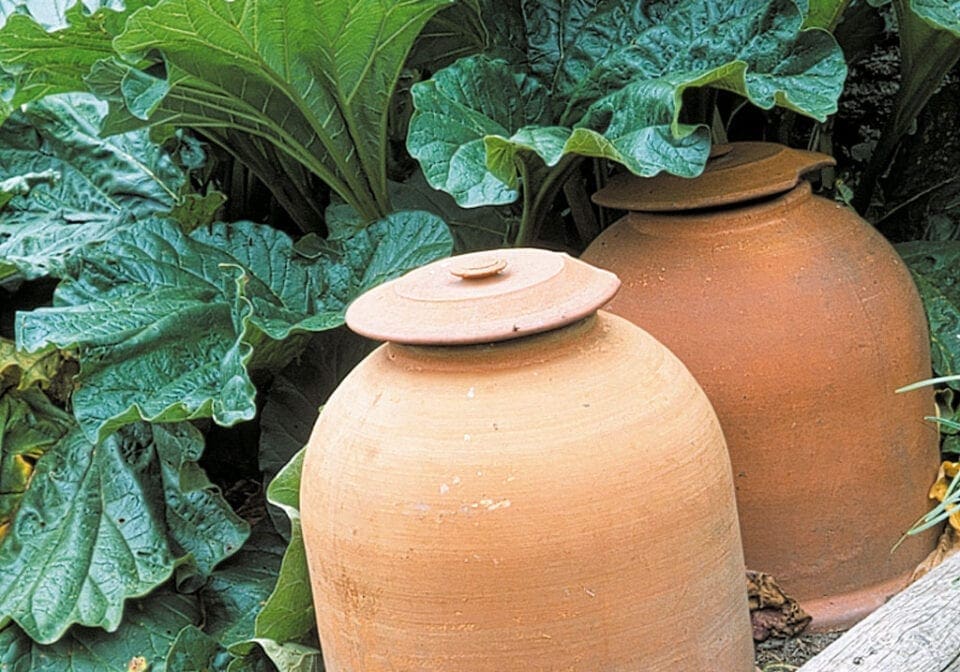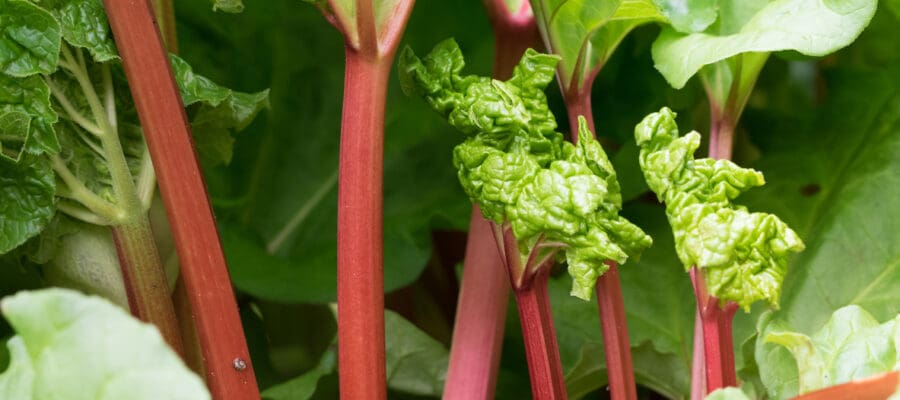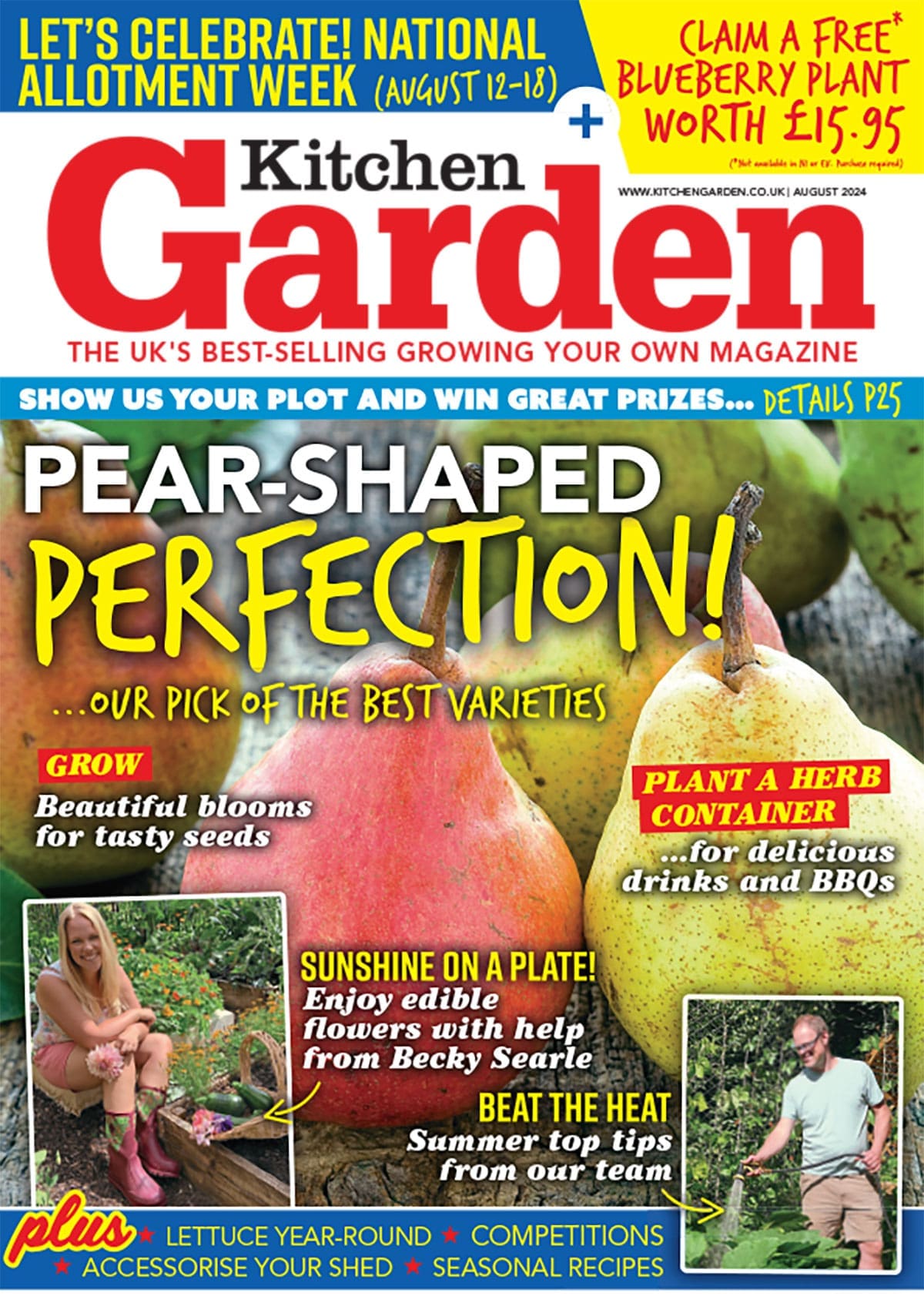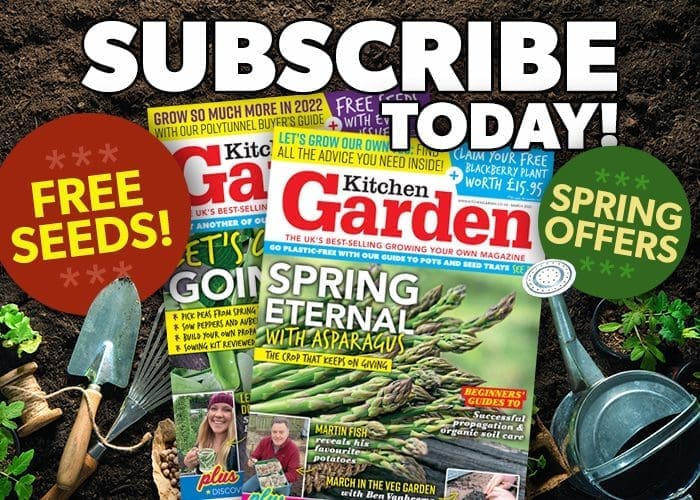Rhubarb is probably the easiest of all fruit and veg crops to grow since by and large it can simply be left to produce a harvest of colourful leaf stalks without much help from us.
However, the best thick and tasty sticks will have been given just a little attention during the season.
Rhubarb varieties
‘Timperley Early’
Is a good one for forcing, producing pale pink stems.
‘Victoria’
A late variety producing red stems in late spring.

Growing Tips
How & when to plant Rhubarb
It is possible to grow rhubarb from seed, but the best plants are of named varieties grown by dividing existing crowns. Plant from October to February.
Choose an open, sunny site for your rhubarb and feed the soil with plenty of well-rotted garden compost or manure.
How to grow on rhubarb
Mulching
Spread a thick layer of organic matter around the plants every year in the winter and water well in the summer. Feed once harvesting ceases to boost plants for next season.
Splitting
Although it’s not essential, plants remain more vigorous if you dig them up and divide them every three years in the winter when they are dormant, making sure that each of your new plants has at least one bud and some healthy roots.
How & when to harvest rhubarb
Rhubarb can be harvested from late April to May, or from March for early varieties and harvesting can continue until around mid-summer, although you’ll want to be careful not to take too much and weaken the plant.
To harvest, take hold of the stalk and twist gently. Try to avoid snapping or cutting the stalk as the stump left behind may rot. Remove the leaf as this part is not edible.
What is forcing rhubarb?
Left to its own devices, rhubarb should begin to crop from March until July at which time harvesting stops to allow the plants time to recuperate.
It is possible, however, to harvest a little earlier by forcing. This merely involves popping an upturned bucket, dustbin or rhubarb forcer over the plant in January, thus excluding light and protecting the crowns to encourage earlier sticks.
Scrumptious recipes for your homegrown rhubarb
More grow guides
For more growing tips and guides, you should subscribe to Kitchen Garden – you’ll receive free seeds with every single issue too!











